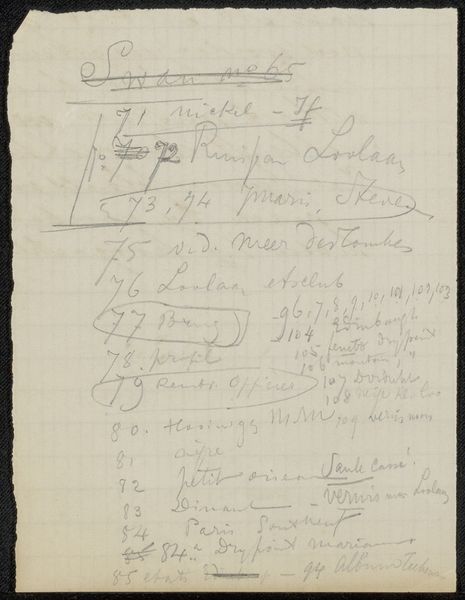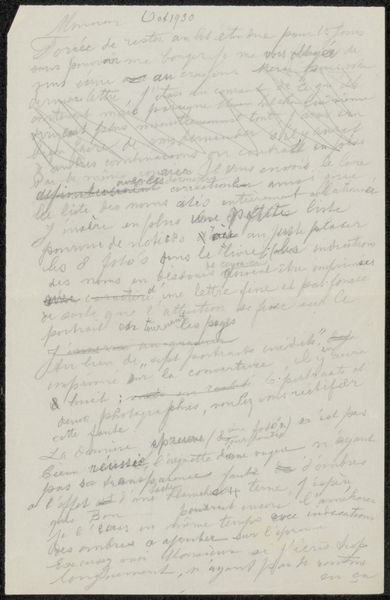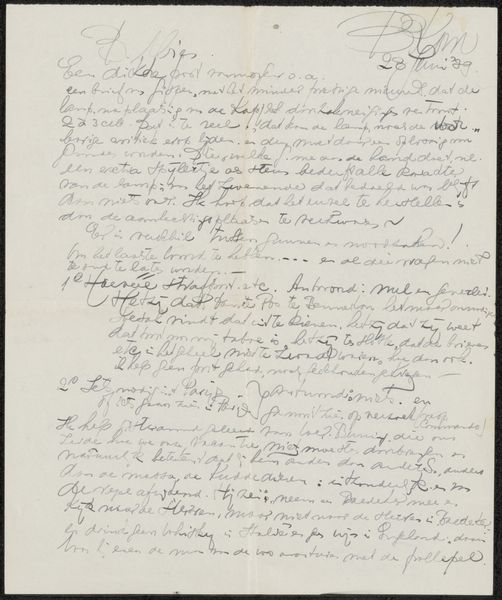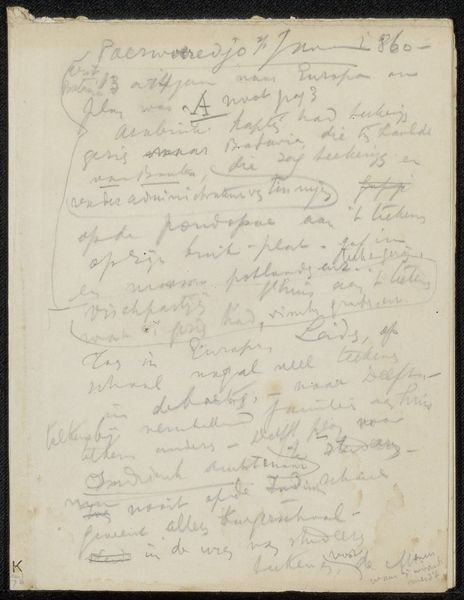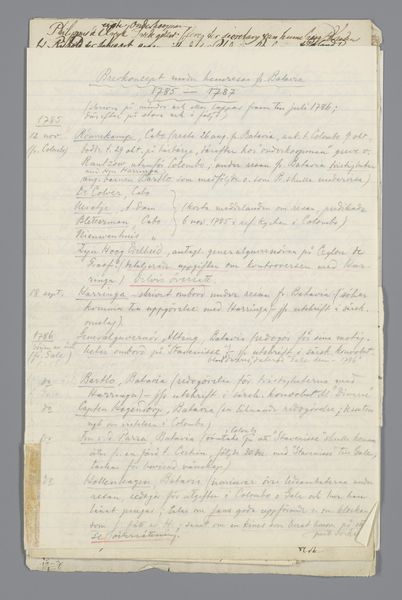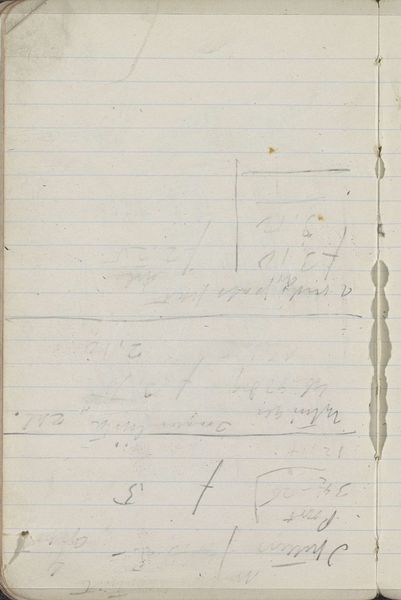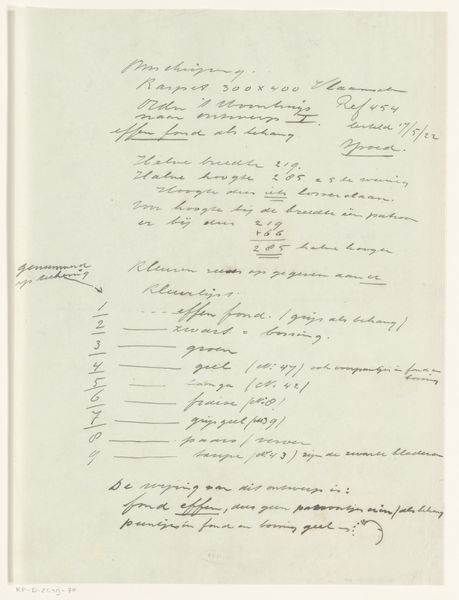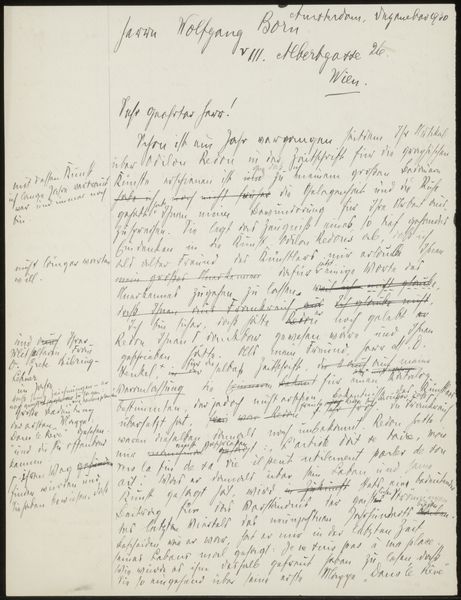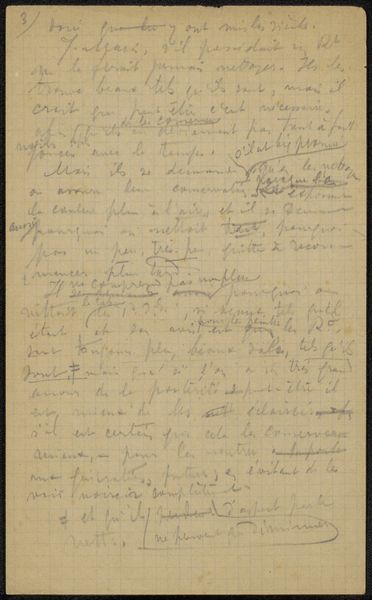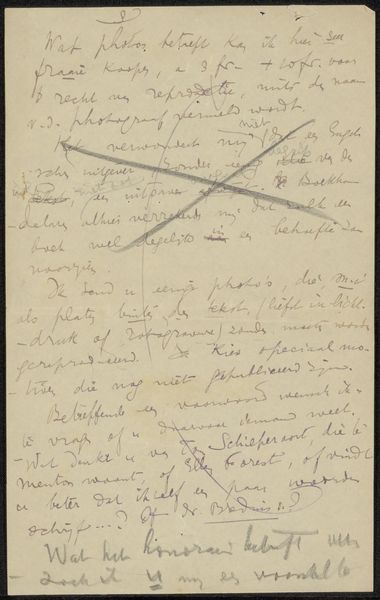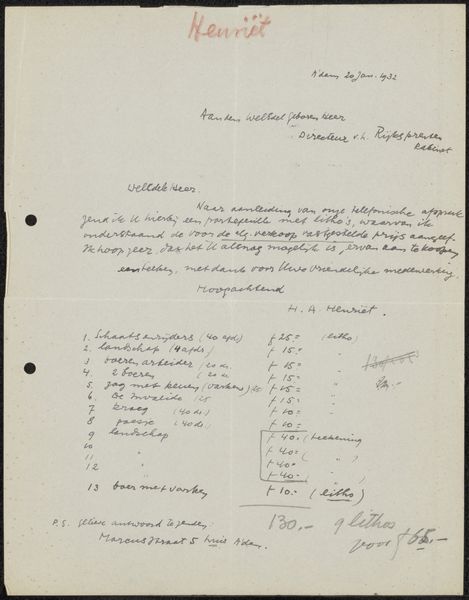
drawing, paper, ink, pencil, graphite
#
drawing
#
paper
#
ink
#
pencil
#
abstraction
#
line
#
graphite
#
calligraphy
Copyright: Rijks Museum: Open Domain
Curator: We’re looking at a work titled “Aantekening uit archief Philip Zilcken,” which translates to “Notes from the archive of Philip Zilcken.” This drawing, made before 1890, combines ink, graphite, and pencil on paper. It’s held here at the Rijksmuseum. Editor: My immediate reaction is that this isn’t necessarily trying to be a “piece of art” at all. It looks like exactly what it says – someone's notations and jottings, like an abandoned train of thought. Curator: Exactly! It challenges that separation between high art and the everyday labor that goes into producing it. Zilcken, as an artist, was embedded in the infrastructure of art making itself; the etching club mentioned at the top points to collaborative economies and artistic circles in the Netherlands. Editor: And you see that very literally reflected in the material reality – the casual execution with graphite, ink and pencil and the sheer density of marks. It gives the impression of someone rapidly trying to capture every fugitive thought. There's almost an anxiety of influence at play, a terror of forgetting! Curator: I see the materiality not as purely functional but also socially indexed. Consider the availability and cost of paper at this time and even Zilcken’s status within the etching club—access to materials mattered, shaping what marks could be made. It makes you consider who had access to such resources. Editor: Right. Though the material scarcity you’re pointing out, of course, paradoxically adds to my sense of compression and overflowing potential. Look at the composition, though seemingly random, there’s a clear hierarchical structure, top to bottom; from more ordered list-making at the top descending to frenetic scribbles and abbreviations. Curator: Agreed, the way Zilcken structured his lists reveals his operational modes within this society, and invites analysis of Dutch art and its institutional systems through these annotations. These scribbles capture and mirror his artistic practice, so the concept of aesthetic abstraction gets turned inside out. Editor: I find myself intrigued by this blurring of the boundaries, these almost chaotic traces left by Zilcken, hinting at something significant yet frustratingly just beyond comprehension, so this allows us to peer behind the curtain to glimpse art in its messy, vital, pre-formed state. Curator: Precisely. It shows us that labor and materials can be art and, conversely, how high art wouldn't exist without these underlying elements. Editor: It’s satisfying, seeing this material stripped bare like this.
Comments
No comments
Be the first to comment and join the conversation on the ultimate creative platform.
